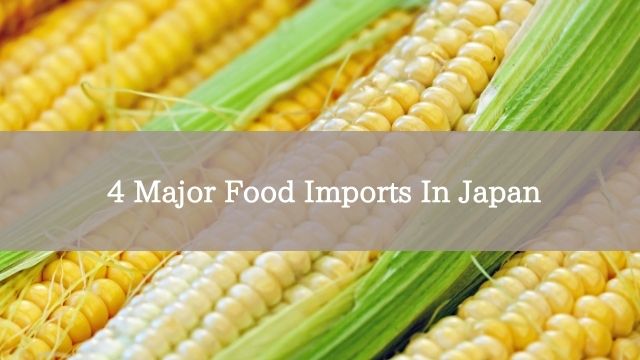When it comes to food imports in Japan, there are several business opportunities especially for agricultural exporters. And even with the decline of population, Japan is still ranked as 11th of the most populous countries in the world. Moreover, Japan is ranked 4th of the largest importers in the world. And a fun fact, the U.S. is one of the major exporters to Japan when it comes to food. And if you are from the United States, your chances for exporting these types of goods in the lists below to Japan are high and successful business venture is reachable.
Japan’s Major Food Imports
We will introduce four of the major food imports in Japan and why there is a continuing demand on each agricultural import. Interested? Here are the lists.
1. Corn
Corn production in Japan is not significant with only four thousand tonnes in 2020. In 1971, it was 44 thousand tonnes then the numbers gradually reduced.
This is why corn imports and other major feed consumption remain high in demand in Japan even with the coronavirus (Covid-19) outbreak in 2020. Japan’s primary supplier of corn is the United States with nearly $2.2 billion which is 24 percent of United States corn exports. Brazil is the U.S. top competitor exporting 70% of Japanese corn market between October 2019 and January 2020.
2. Beef
Due to the growing demand of red meat in Japan by consumers, Japan ranks as the third largest beef importer in the world. The U.S. is the largest export market of beef to Japan shipping approximately $1.9 billion of beef, a total of 26 percent of United State’s beef export products. Japan’s second largest importer of beef is Australia, sharing 44 percent market value.
3. Pork
Japan tops as the largest pork and pork products importer in the world with the demands still increasing as the imports climbs to 6 percent in 2016 which is equivalent to $4.9 billion to $5.2 billion in 2019. Japan’s top pork supplier is the United States with a share of 33% followed by the EU 8%, then Canada and Mexico. Pork is a staple in Japanese market and to several Japanese cuisines with an average of 13 kilograms of pork consumed per person in Japan.
4. Soybean
Soybean production in Japan dramatically decreased from 253 thousand tons in 2017 to 212 thousand tons in the following year. Another staple in Japanese cuisine, soybeans are used in many processed products such as flour, soy sauce, tofu, oil etc. The United States is the largest supplier of Japan for soybeans with a market share of 63 percent in 2017, an equivalent of approximately $975 million. Next to the U.S. is Mexico with a market share of 14%. Japan’s soybean imports increased in 2019 to 2020 amounting to 3.386 million tonnes then 3.405 million tonnes respectively.
Conclusion
Due to Japan’s thriving economy and increasing populace, there is no stopping in the Japanese import business. Would you like to be one of Japan’s agricultural suppliers? Let us know in the comments what products you would like to export in Japan.
Reference:
https://www.jetro.go.jp/ext_images/mexico/mercadeo/handbook_importedfoods.pdf
https://www.fas.usda.gov/data/united-states-agricultural-exports-japan-remain-promising
https://www.world-grain.com/articles/13459-corn-demand-remains-robust-in-japan

